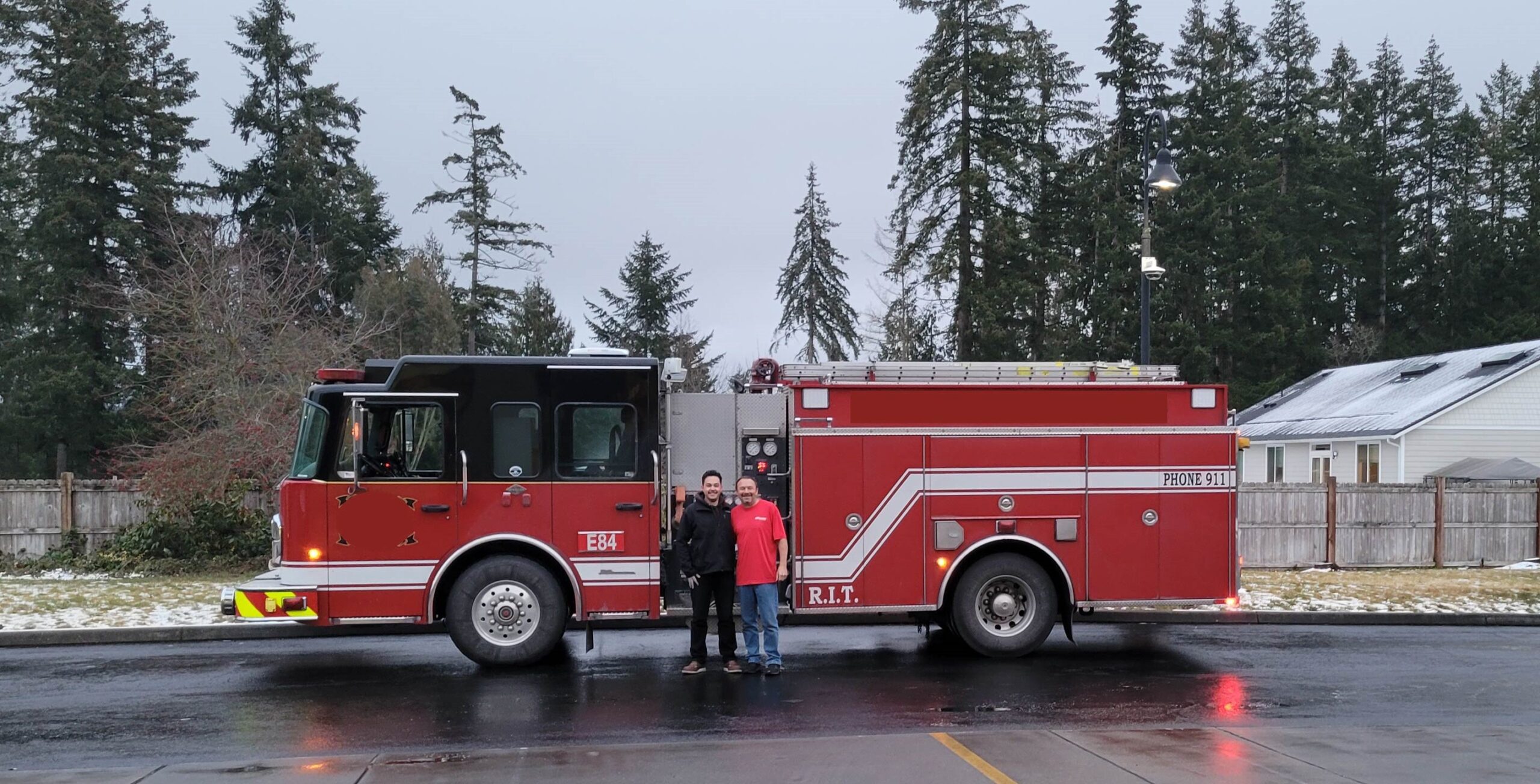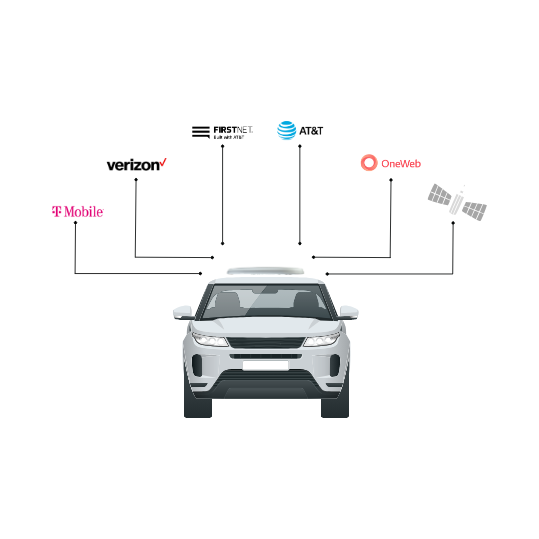BLOG
Fire Trucks Are Now Equipped with Flat Panel Satellite Antennas—A Game-Changer for Emergency Connectivity
For the first time (to our knowledge), fire trucks are rolling out with flat panel satellite antennas—a game-changer for emergency communications.
In a crisis, connectivity isn’t optional—it’s mission-critical. First responders rely on real-time communication, GPS tracking, and data-sharing to make split-second decisions. But what happens when they enter zero-connectivity zones, where traditional networks fail?
Now, thanks to SuperGIG™, OneWeb’s Low Earth Orbit (LEO) satellite network, Intellian’s OW10HV antenna, and Dejero’s 211 GateWay, emergency responders never have to worry about lost connections again.
The Challenge: No Signal, No Support
Fire crews, EMTs, and battalion chiefs often operate in rural areas, mountainous terrain, disaster zones, and remote regions where cellular networks are unreliable—or nonexistent. In these situations, the inability to communicate can mean delays in response, missed critical updates, and compromised coordination.
For one fire department, this was a recurring issue. Calls would drop mid-route, responders couldn’t share real-time updates, and communication was, at best, unpredictable. They needed a solution that could deliver seamless, uninterrupted connectivity—anywhere.

The Solution: SuperGIG™—A Failproof Network for First Responders
To eliminate these dead zones, the department deployed SuperGIG™, IP Access International’s advanced multi-path connectivity platform. SuperGIG™ seamlessly blends:
✅ Major Cellular Networks – Aggregating multiple LTE carriers for the best available signal.
✅ LEO Satellite (Eutelsat OneWeb) – High-speed, low-latency broadband where cellular networks fail.
✅ GEO Satellite (Optional for Backup) – Providing additional resilience in extreme conditions.
If one network fails, another takes over—ensuring first responders stay connected no matter what.
OneWeb’s LEO Connectivity: Instant, Low-Latency Communications
At the core of this deployment is OneWeb’s LEO satellite network, which provides global, high-speed broadband with near-instantaneous connectivity. Unlike traditional geostationary (GEO) satellites at 22,000+ miles, OneWeb’s satellites orbit at just 1,200 miles, dramatically reducing latency.
- Near-instant connectivity (versus GEO’s higher latency)
- Speeds up to 500 Mbps
- Global coverage, even in the most remote areas
With LEO, emergency responders can stream live video, access real-time GIS data, transmit mission-critical updates, and maintain seamless communication—even in complete cellular dead zones.
Intellian OW10HV: The Vehicle-Mounted Powerhouse
To connect to OneWeb’s LEO network, each emergency vehicle was equipped with Intellian’s OW10HV antenna—a sleek, electronically steered antenna (ESA) built for mobility and rugged environments.
- Compact & aerodynamic – Unlike bulky traditional satellite dishes, it’s ideal for vehicle mounting.
- Seamless connectivity while in motion – No delays, no disruptions.
- Low power consumption – Efficient for vehicles running multiple mission-critical systems.
- Designed for tough conditions – Whether battling wildfires or navigating disaster zones, it performs.
With 11 emergency vehicles, including fire trucks, ambulances, and battalion chief rigs, now outfitted with the OW10HV antenna, responders can operate without fear of losing connectivity in the field.

The Dejero 211 GateWay: The Ultimate First Responder Router
To tie all these connectivity sources together, each vehicle was also equipped with the Dejero 211 GateWay—a high-performance, multi-network router designed for mission-critical operations.
- Multi-network blending – The 211 GateWay intelligently combines cellular and satellite networks for maximum uptime.
- Seamless handoffs – As a vehicle moves between different coverage zones, the system automatically transitions between networks without dropping the connection.
- Strong cybersecurity – Built-in VPN tunneling, firewall protections, and AES encryption keep communications secure.
- Rugged & built for emergency response – Designed for high-vibration, high-impact, and extreme weather conditions.
- Optimized for mobile command – Supports real-time video streaming, GPS tracking, data transmission, and communication tools—all while in motion.
The Dejero 211 GateWay acts as the central hub, ensuring that whether a fire truck is deep in the mountains or racing through urban congestion, it remains connected to dispatch, command centers, and fellow first responders.
More Than an Upgrade—A Lifeline
This isn’t just an improvement to emergency response vehicles—it’s a lifeline in the field. By integrating SuperGIG™, OneWeb’s LEO satellite network, the Intellian OW10HV antenna, and Dejero’s 211 GateWay, first responders can now operate with confidence, reliability, and peace of mind.
📡 No more dead zones.
🚒 No more dropped calls.
🆘 No more compromised communication.
SuperGIG™ is redefining emergency communications. If your department faces connectivity challenges, let’s talk about how we can help bring the same game-changing technology to your fleet.

Why Choose IP Access International?
With decades of experience in providing connectivity solutions for critical operations, IP Access is committed to delivering reliable, high-performance networks tailored to each client’s unique needs. Our blend of cellular, satellite, and private wireless technologies ensures that our clients have access to connectivity where they need it most. Whether you’re managing a fleet of public safety vehicles, running operations in a remote mine, or setting up a temporary network for emergency response, IP Access has a solution to keep you connected.
Our team works closely with clients to understand their unique challenges, ensuring that every solution we deploy is not just a network but a strategic advantage. With IP Access, you’re not only getting connectivity—you’re gaining a partner in operational excellence.